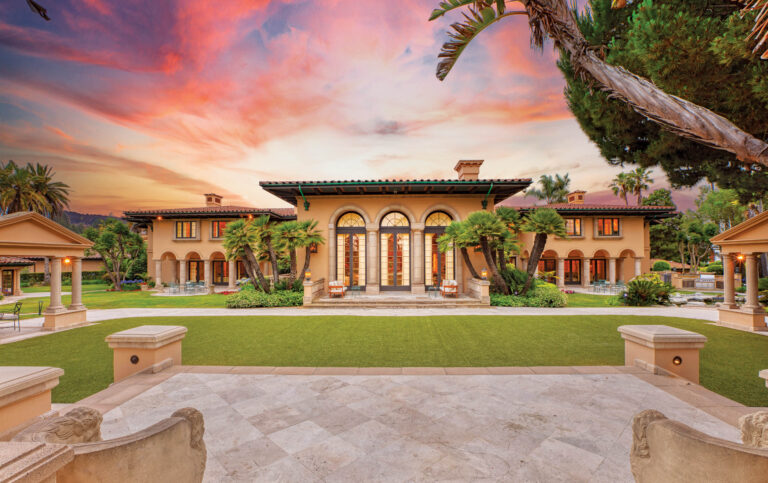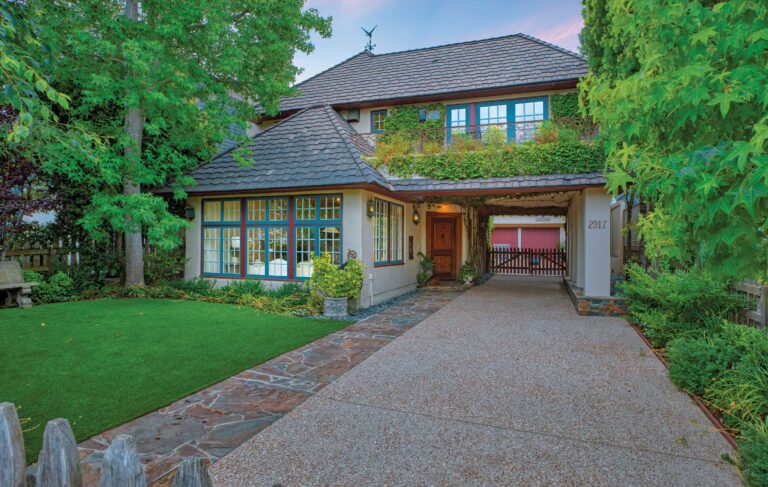Table of Contents
- What led you into real estate?
- One of the first properties you represented was a Neutra home. How did that help inspire your vision of architectural real estate as a niche market?
- What, specifically, fuels your passion for architectural real estate?
- Which architects do you find particularly influential?
- How did growing up among the Arts & Crafts masterpieces of Pasadena inform your work?
- Describe your curatorial approach to modern architecture.
- Why provide homeowners with original drawings and background information on their homes?
- In your opinion, why is it important to give homebuyers advice on maintaining the architectural integrity of a home?
- What can you tell us about your role as a well-respected historian of the state’s most important properties?
An avid supporter of maintaining a home’s architectural integrity, Crosby Doe of Crosby Doe Associates takes a curatorial approach to modern architecture, supplying clients with original drawings and background information on properties to give a sense of its history. Here, the top producer shares with DIGS his real estate philosophy, deep love for architecture, and the homes that inspired his career as an architectural real estate agent.
What led you into real estate?
As early as I can remember, nature and the built environment have had a captivating effect on me… I identify with, and feel connected in a very personal way, to external places and objects, whether it was a weathered door on an old adobe, the Old Mission, Tuolumne Meadows in Yosemite, the Pasadena City Hall, the Pasadena Library, Wallace Neff’s Bubble House, or even a Schindler House seen only fleetingly while passing by in a car.
All have elicited a sense that there was a special spirit in them that I could connect and be at one with. I wanted to capture and share these feelings with others. Out of college, this led me into photography, however, I was not able to make a living following this line of work. So when my father suggested that he had a friend in Hollywood that was looking for real estate agents, I jumped at the opportunity.
One of the first properties you represented was a Neutra home. How did that help inspire your vision of architectural real estate as a niche market?
Truth be told, the first listing I ever obtained was a simple Spanish house on Sierra Bonita in Hollywood. Perhaps due to its unassuming simplicity, the architect, Pierre Cabrol, who also designed the Cinerama Dome in Hollywood, bought the house and lived there the rest of his life.
By very good fortune, the Neutra House was the second listing I obtained. It was designed for Eugene Loring, who played Bronco Billy on the New York Stage. While I sat in this house during open houses, I felt the same mystical connection to it, as so many other objects in my life. The house moved me like a great work of art. While we offered the one-bedroom house for a record price of $120,000 at the time, I had the feeling that the sense of peace and beauty inherent in it was in some ways priceless beyond real estate valuation.
That experience, and simultaneously running across David Gebhard and Robert Winter‘s A Guide to Architecture of Los Angeles and Southern California connected the dots… architecture was not just real estate, it was art! The guidebook listed the Pasadena Library, San Gabriel Mission, and even the Schindler House I had seen from the car window before it was torn down. From then on, all I wanted to do was to represent, experience, and share these properties in the marketplace.
What, specifically, fuels your passion for architectural real estate?
I am not really so enamored with the business side of real estate, but through it, I have found a perfect venue to experience, and share the gifts of architecture. Architecture is as big and important as any other art form in the world. Each day poses the opportunity to learn more in the field and I am never bored.
Which architects do you find particularly influential?
In terms of modernism, in this country at least, I think that the work and ideas of Frank Lloyd Wright, Ludwig Mies van der Rohe, and Rudolph Schindler are the most influential. They were the roots so to speak of much of the great mosaic of modern architecture we can experience today.
How did growing up among the Arts & Crafts masterpieces of Pasadena inform your work?
As a child, I played in Greene and Greene’s Culbertson House, and the first house I voted in was Greene’s Blacker House. More than anything, these houses impressed me with their fine woodworking, use of natural materials, and the care with which they were built.
Describe your curatorial approach to modern architecture.
That’s an easy question to answer. If you were fortunate enough to own a Rembrandt painting, would you want to re-paint it? Obviously not! The same goes for real architecture. I find that those priceless, ‘spiritual values’ of a place that I referenced earlier are generally felt most intensely when a particular property retains its original historic fabric.
If anything, that is probably what drives my conservatism in terms of interventions. I have witnessed many a masterpiece of architecture lose its magic in the hands of decorators. This is not to say that I am absolutely a purist. There are countless minor works of architecture, which may, in the hands of the right owner or architect, be substantially improved upon, enhancing rather than diminishing the values of the types of properties.
Why provide homeowners with original drawings and background information on their homes?
Many properties I have represented have experienced the effects of entropy, or misguided ‘improvements.’ Blueprints, original drawings and photographs provide the best road maps for restoring what is latently present but has been lost.
Additionally, there are a number of important archives in California housing on this material as it pertains to the worthy portions of our built environment. Knowledge of these archives and their contents can be of immeasurable value to my clients who wish to restore the lost integrity of their property and thereby enhance its value.
In your opinion, why is it important to give homebuyers advice on maintaining the architectural integrity of a home?
Two main reasons: The building and ‘home improvement’ trades run huge advertising and propaganda campaigns that have conditioned the general public to believe that new is better. It is too ingrained in the general public that we are supposed to ‘fix up’ our houses. There needs to be a voice to counter this type of persuasion. Secondly, I have found, especially with properties with historic or architectural value, that they obtain their best prices when the house is in good, original condition.
What can you tell us about your role as a well-respected historian of the state’s most important properties?
I really owe my career and much of the joy in my life to the real historians: Esther McCoy, David Gebhard, Robert Winter, and Tom Hines, to name a few, who have opened my eyes to the depth and historic significance of our architectural heritage. The best I can do is to continue to develop and pass this knowledge on.
Photography by Paul Jonason






